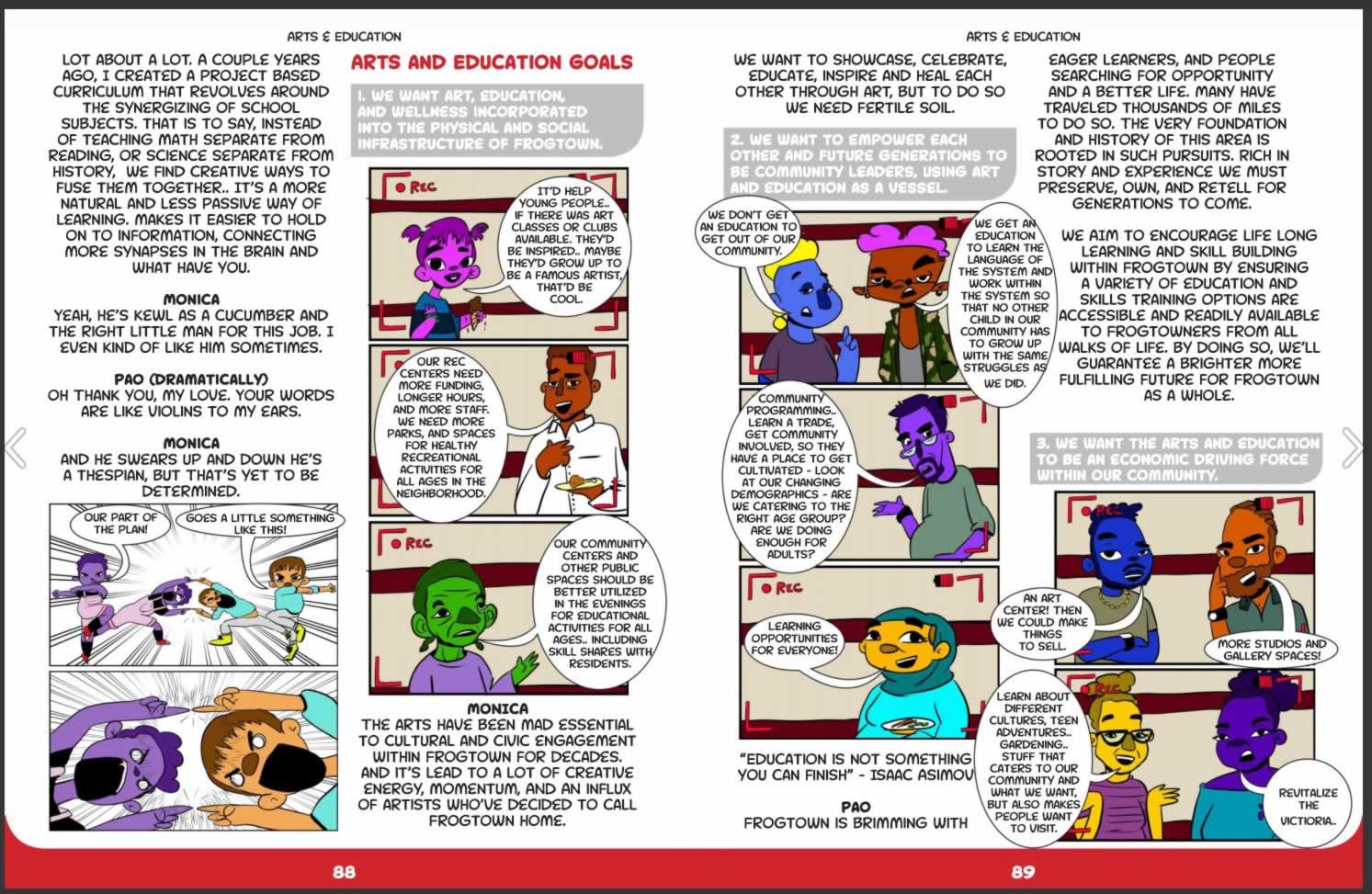I don’t know what inspired me to do so, but last week I visited ProPublica’s website and learned that Free Street Theater and ProPublica Illinois were teaming up to offer theater-journalism workshops across the Illinois.
What caught my eye was that they put out a call for invitations to communities in manner reminiscent of the process Marc Folk said The Arts Commission of Toledo employed when soliciting feedback from different n eighborhoods of that city.
In addition to going to Toulon, IL, Free Street and ProPublica Illinois will be visiting Urbana, Carbondale/Jackson County, Rock Island/Quad Cities, and Rockford during May. So if you live in or near any of those places, check it out.
They did a trial run at the end of March in Chicago and have posted some of their reflections already. One of the things they recognized immediately was a need to do a better job of making people aware that they were having these workshops.
In the course of playing various games, they discovered that the terms people use to define their community, including how they defined community, had some bearing on how they composed the narrative about themselves.
We played a game in which we were asked to line up according to how strongly we agreed with various statements, from “We are living in a war zone” to “I love ice cream.” You’d be surprised at how many interpretations there are of what a war zone is, and how many people have strong feelings about ice cream.
In small groups, we talked about a time we each felt misrepresented in a news story, and how that directly affected us and our communities. It led to revealing conversations about how we each defined “community.”
[…]
At the end of the night, we returned to the sticky notes to ask: What do we want the story of our community to be? This is an important question — for us and for this project — that journalists rarely ask. But they should. If journalists don’t know how a community views itself, journalists don’t know what that community has at stake when it is represented or misrepresented.
If we never bother to ask — in real, concrete ways — it can seem like we don’t care. Journalists know how to fact-check names and statistics. But how often do journalists fact-check the underlying narrative of a community?
Since there is an ongoing conversation in the arts about how people want to see themselves and their stories depicted in performances and other forms of creative expression, these reflections by ProPublica reporter Natalie Escobar should pretty much be shared by those identifying with the arts and culture community.



There is another way. The Gewandhaus Leipzig in Germany (concert venue) offers flex- tickets for a small premium. Not an…